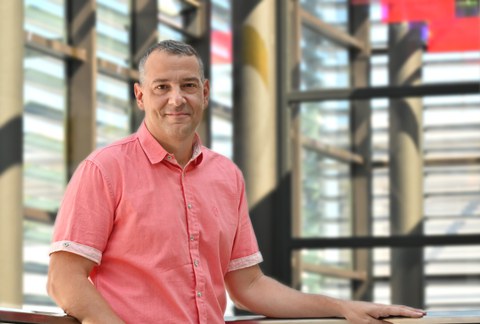Aug 29, 2024
TUD laser expert Lasagni elected to Scientific Society for Laser Technology (WLT)
Prof. Dr. Andrés Fabián Lasagni, Chair of Laser-Based Manufacturing at the Institute of Manufacturing at TU Dresden (TUD), has been elected a member of the Wissenschaftliche Gesellschaft für Lasertechnik e. V. (WLT). The election took place during the society's recent general assembly and recognizes his pioneering work in laser-based manufacturing and his contribution to the promotion of sustainable technologies. Prof. Lasagni is Director of the Center for Applied Micro-Photonics (CAMP) at Fraunhofer IWS.
"It is a great honor to be elected as a member of the WLT," said Prof. Lasagni. "This recognition validates the work I started 20 years ago and underscores the importance of laser technology for progress in science and industrial applications." He is committed to using laser technology for sustainable and efficient manufacturing processes. "I am certainly excited about the potential of laser technology to revolutionize sustainable and efficient manufacturing. The versatility of laser technology is enormous, from increasing the efficiency of electrodes for hydrogen production to developing antibacterial surfaces or efficient solar cells. Together with intelligent process monitoring systems, these advances will play a crucial role in the future of manufacturing," he added.
About Prof. Andrés Fabián Lasagni
Prof. Andrés Fabián Lasagni - of Argentinean, Italian and German descent - received his Master of Science in Chemical Engineering from the National University of Comahue, Argentina, in 2002 and his PhD in Materials Science from Saarland University, Germany, in 2006. From 2007 to 2008, he was a research scientist and Alexander von Humboldt Fellow at the Georgia Institute of Technology. From 2008 to 2017, he led a group at Fraunhofer IWS with which he developed several optical concepts for direct laser interference patterning. He has been a professor at the Institute of Manufacturing at TU Dresden since 2012 and Director of CAMP in collaboration with Fraunhofer IWS since 2017. His research focuses on the development of functionalized surfaces using laser-based methods, the creation of optical devices for high-throughput laser structuring and the innovation of inline monitoring systems. He has published over 500 articles and holds more than 30 patents. His work has been recognized with numerous awards, including the Fritz Grasenick Prize, the Werner Köster Prize and the Green Photonics Award. In addition to his research and academic achievements, Prof. Lasagni promotes international scientific collaboration by coordinating the Network of Argentinean Scientists in Germany (RCAA). He is also a co-founder of SurFunction GmbH.
About the Scientific Society for Laser Technology e. V.
Promoting laser technology and developing laser radiation as a universally applicable tool: the WLT is committed to making a significant contribution to the development of photonic technologies in science and industry. The organization is characterized by its broad representation of scientific, engineering and medical research institutions in the field of laser technology and optical technologies, and it bridges the gap between research, development, industrial production and medical applications. The promotion of young scientists is a particular priority at the WLT. Prof. Dr.-Ing. Christoph Leyens, who also heads the Fraunhofer Institute for Material and Beam Technology IWS and the Institute of Materials Science at the TUD Dresden University of Technology, is a member of the board.
Further information can be found at
www.wlt.de
Contact:
Prof. Andrés Lasagni
Chair of Laser-based Manufacturing
© TU Dresden
How can aircraft wings be protected from frost and ice? This is what Andrés Fabián Lasagni is researching at TU Dresden. He and his team are using lasers to give surfaces completely new properties. Frost protection is just one area of application. In other research projects, lasers are used to minimize friction or give surfaces antibacterial properties. In "At work with ...", the professor shows what can be learned from surface structures in nature and how laser processes can imitate them.

